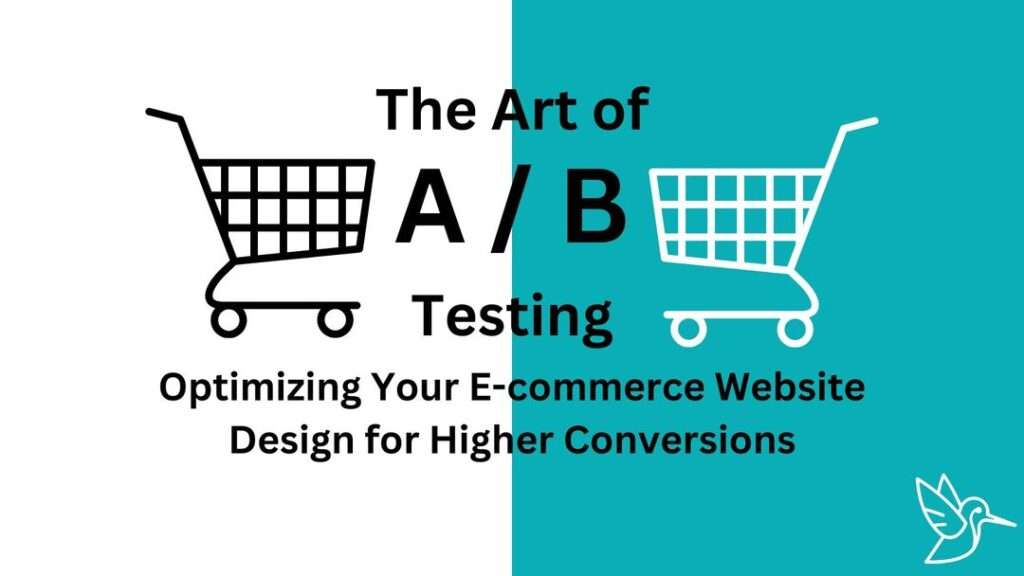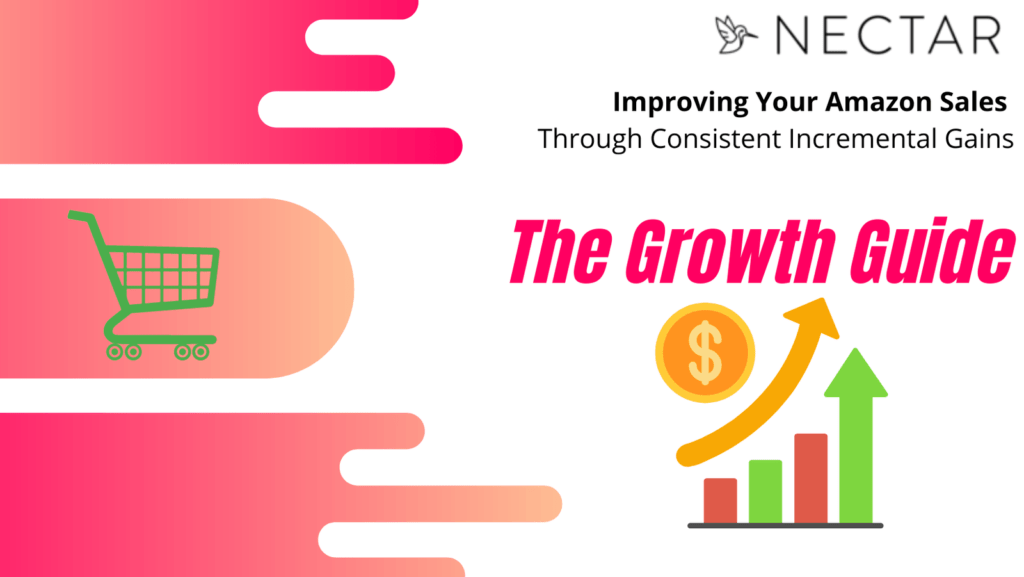When it comes to increasing traffic for your Amazon listings there is no more tried and true strategy than Pay-Per-Click advertising. Fortunately for sellers big and small, Amazon’s PPC features are comprehensive, flexible, and proven to deliver results. The truth is Amazon is just as powerful an advertising platform as it is a selling platform.
Utilizing PPC strategies can garner your products a multitude of benefits beyond paid advertising such as increasing organic traffic, search rankings, and promoting your business beyond on third party sites such as Google.
Even if you feel your products are performing well enough without paid search, it’s almost certain that your competitors are investing in paid efforts. If you want to conquer the evolving landscape of Amazon, you can’t allow your competitors to gain an edge anywhere. If PPC is something you’ve steered clear of due to failed past efforts or lack of knowledge, the below guide to strategies should help get you going in the right direction
Getting Your PPC Campaign Started
Amazon walks you through the operations of your paid search campaign pretty easily, but not having an understanding of what you’re setting up will cost you in the long run. The issue is Amazon’s one-size-fits-all suggested uses are more for the benefit of their pocketbooks than it is for yours. Sure, increasing your budget and turning on the auto-pilot will help you achieve results, but have you thought about the results you’re looking to gain?
Firstly, it’s important to be thorough and take every aspect of your campaign set up seriously. Even when it comes to something as small as naming your campaign. No matter how successful or unsuccessful your campaign is you’re going to want to be able to look back and analyze the results.
Be sure your campaign name is clear and easy to identify. If you’re running a more generic campaign, put it in the name. If you’re relying on auto-targeting, put that in the name and so on. Even if you’re not getting granular with your campaign set up, these are serious factors in your business’s overall success on Amazon and should be approached as such.
No matter what sponsored campaign type you run with, all three center around strategy and it’s important to be aware of what yours is before you start throwing dollars at it. Evaluate your Amazon presence, assess your products, and be smart about how you position your catalog.
If you’re in need of gathering insights then perhaps consider automatic targeting all the way through. If you feel you have a product ready to strike on conversions then you might look to go mostly manual. It all depends on where your catalog is at, the level of knowledge you have about your keywords, and at what stage of the purchase journey you’re really looking to capture consumers. Fortunately, Amazon provides enough tools so that no matter where you’re at, there’s always a strategy ready to help you strike.
The Importance of Match Types
When it comes to auto-targeting there are 4 match types that Amazon allows you to bid on for keywords. How you balance your budget between the 4 will be affected by your keyword research and industry.
Keep in mind, the ways you can utilize match type strategies will all depend on how much time you’ve invested into your product SEO. Have you optimized your product titles? Have you reviewed the suggested bids on each keyword? Are all your keywords relevant to your product? It can be a time-consuming process but it’s vital to gaining the edge over your competitors.
1. Close Match Type
Close match type means you’re going to trigger for search terms that match the keywords on your product page as closely as possible. It’s for this reason that you’ll likely want to bid higher on close matches since they’ll more precisely target the terms you’ve selected. But before you drown most of your budget into close match type, first be sure to evaluate what your product is indexing for.
Are you indexing for only relevant keywords? Are there any possible wasted terms your campaign is triggering for? Or maybe you’re still trying to find the right search terms to index for. If these are the case you may not be ready to invest in a close match type heavy campaign. Take the extra time to optimize your product SEO to rank for the higher volume keywords, try looking into more long-tail terms, or gather more data to get a clearer picture of what you should be focusing on.
2. Loose Match Type
Loose match type is a great way for finding that hidden data you may have overlooked or just not have realized was relevant to your campaign. It’ll look for terms adjacent to your keywords that, in practice, should correlate to your listing. It’s by no means a match type you should solely rely on, especially when driving conversions, but you may find your product indexing for relevant keywords you didn’t think about earlier.
If you’re selling bedsheets you may find your product indexing for similar categories such as pillow sheets or mattress liners. Sometimes that makes sense for your campaign. But if you’re selling dog food then it probably wouldn’t make so much sense to index for bird feed. When auto-targeting it’s important to remember you’re not always in control of what keywords you’re bidding on and to adjust your bid amount accordingly based on how much you trust each match type.
3. Substitute Match Type
Substitute match type is perfect for products that are ready to drown out the competition. Substitute allows your product to show up on competitors’ detail pages as an alternative option to their offerings. This is perfect if you’ve done your competitor research and are confident in your product’s superiority. On the other hand, if you’re aware of 5-star products that have an edge over your 3-star offering, then this may not be the best option for you.
While you can’t initially control what product pages you’re triggering for, you can collect the ASIN data of the products you index for. This will then allow you to come back to your campaign setup and add those ASINs as negative so you can avoid triggering for them in the future.
You have to pay attention to this because you’ll lose a lot of your budget quickly paying for clicks that don’t drive conversions when consumers realize the competitor’s product better serves their needs. Again, the major factor for how much you might rely on substitute matching will be how well you’ve optimized your product.
4. Complement Match Type
Complement match type allows your product to appear on listings that your offering may bundle well with. Again, if you’re pushing bed sheets, then you might compliment a pillow sheet offering. But take the time to evaluate and really ask yourself if someone shopping solely for pillow sheets would be interested in your bed sheets offering. If the chances of that are low then compliment match type might not be worth an investment. Vice versa, if you’re offering pillow sheets, then maybe you want to aim for higher bidding on this match type.
The Hands-On Approach
When it comes to taking granular control over your campaign, manual targeting may be more your forte. You’ll get to review an in-depth list of every keyword, allowing you to decide on the match type and bids for each of them.
More control doesn’t necessarily mean better results in this case though. In fact, the deeper depth of control actually offers up a higher chance of letting things get out of control if you’re not aware of what you’re doing.
1. Exact Match Type
Manual has a different set of match types, only offering up 3 options. Your most straightforward match being exact matches. This is similar to close match but more on the nose, only seeking the exact match of that chosen keyword. You need to be sure that the keyword you’ve chosen is relevant to your listing when it comes to exact because you will bid on these terms and need to ensure that bid is worth it.
2. Phrase Match Type
Next is phrase match which looks for any phrase that includes your keyword. If you’re aiming for bed sheets then you’ll trigger for any searches that include bedsheets in the phrase. This can be a valuable way of discovering what consumers are looking at around your product and show you how you might be able to further funnel them into your catalog.
3. Broad Match Type
The final is broad match which works similar to loose match type and will seek a range of terms around the selected keyword. This means if you’re looking at men’s shoes it may index for things like kid’s shoes and is again one of those match types you may want to lower your bids on if you don’t have a broad category product.
Once you’ve evaluated your product, keywords, and campaign goals, then you’ll be aware of how to start implementing your match type strategy. A major part of that strategy will come down to your budget and if you fail to strategize around that then you’re wasting investments of both resources and time.
Mastering Your Budget
Bid strategy is something no brand wants to overlook when it comes to paid search. An unfocused bid strategy will cost you on results even if you’re not necessarily pushing conversions.
Amazon always offers up a suggested budget. While higher budgets do generally generate more results, Amazon’s suggested budget is usually more focused on getting you to invest more in their platform than it is your catalog. So take the time to review a budget that would really set you up for a great ROI. Here are some strategies on how to utilize that budget once you’ve arrived at a decision.
When it comes to auto-targeting you’re going to set your bids based on those above match types. As we went over above, it will all depend on your evaluation of your offering and the results you’re looking to achieve. If you truly want a conversion-driving campaign and have put in the time investments to understand your keywords and how your product stacks up to the competition. Once done, you’ll most likely look to bid higher on the close and substitute matches.
When you have a solid list of relevant keywords you’re probably not going to want to waste bids on loose keywords and sometimes even compliment match type may be something you down bid on. A superior product means substitute match types may be where you want to bid highest as well. The goal is to make sure you’re being precise and not stretching your budget thin on irrelevant search terms by putting high bids on every single match type.
For manual, you’re going to need to dig a little deeper. Whether you’re plugging in your keywords yourself or taking from Amazon’s suggested list, it will be important to review each keyword you’re bidding on. Amazon will give you a list of keywords with decent volume based on your listing. These are great because it means your listing is already ranking for these terms but they’re going to have competition so you can’t spend time bidding too high on every single one of them.
In our experience, it’s always been valuable to take the extra time to review each keyword in our campaigns and not just rely on the suggested bids. Sometimes you’re going to see which keywords are of real value and worth going beyond the suggested bid. Most of the time you’ll also see a list of terms that are well below the value of their suggested bids for your campaign. Filter your list by match type, then evaluate each one to make sure you’re maximizing your bids for profitability.
The moral of the story is the more time you spend on evaluations and research the more money it will save you in the long run. That can be hard for a lot of businesses to handle, investing both their money and time into Amazon is a struggle. But you can bet your competition is already putting in these necessary measures to get ahead and falling behind is not an option in Amazon’s steadily evolving landscape.
Don’t Discount the Value of Data
This is perhaps the biggest strategy to keep in mind throughout all of your Amazon initiatives. If you haven’t noticed by now, data and consumer insights are a game-changer when it comes to Amazon strategy. Unfortunately, when your business is just starting up on Amazon it can be hard to have a lot of data to work with, especially given that Amazon runs on an entirely unique set of metrics and success factors. The good news is you have options for building up these insights at any point of your Amazon journey and we can help you get started.
As mentioned before, understanding the goal of any campaign is going to help you in future endeavors. Ultimately the name of the game is conversions, yes, but if you’re new to the market that may be a hard first metric to drive. If you haven’t been running your Amazon brand for a while or working with a team that has then you’re not going to have all the know-how to achieve conversion-focused results.
Take advantage of tools like auto-targeting, substitute, and loose match. Pay attention to what you’re indexing for and start analyzing the results. Substitute will help you garner a closer look at the competition and what consumers are paying attention to. Loose match will help you get a broader range of search terms and help you assess how to better optimize your listings. If you’re finding yourself with a high click rating and low conversions then take a second to see where these results are deriving from. You may be working with lackluster keywords and will need to put in the time to reevaluate your keyword research.
Data drives results across the board when selling on Amazon. The results you achieve from your paid search campaigns can be valuable elsewhere. The insights gathered can be great for optimizing listing titles, updating product descriptions, designing your Amazon brand store and so much more.
Trust the Experts
Even if you don’t think you have the time, promoting your products on Amazon is a growing need for any eCommerce business and failing to do so offers up an opportunity for competition to gain an edge over your offerings. If you’ve already evaluated your business’s need for Amazon success and are ready to commit but are struggling to find the time needed to maximize results, consider partnering with a business that has already done the work and is ready to do it for you.
At Nectar, we recognize the growing importance of establishing Amazon success and we’ve experienced first hand what it takes to get there. Our strategies and methodologies have already been worked out to maximize profits and increase growth no matter what stage your Amazon brand is at. Even established brands can have difficulty navigating PPC and investing the time and resources required to be successful.
Whether you’re just looking for help on your PPC efforts or in need of an entire Amazon enhancement, we’re ready at every level to help. Just take a minute to fill out our request form. We look forward to connecting!






